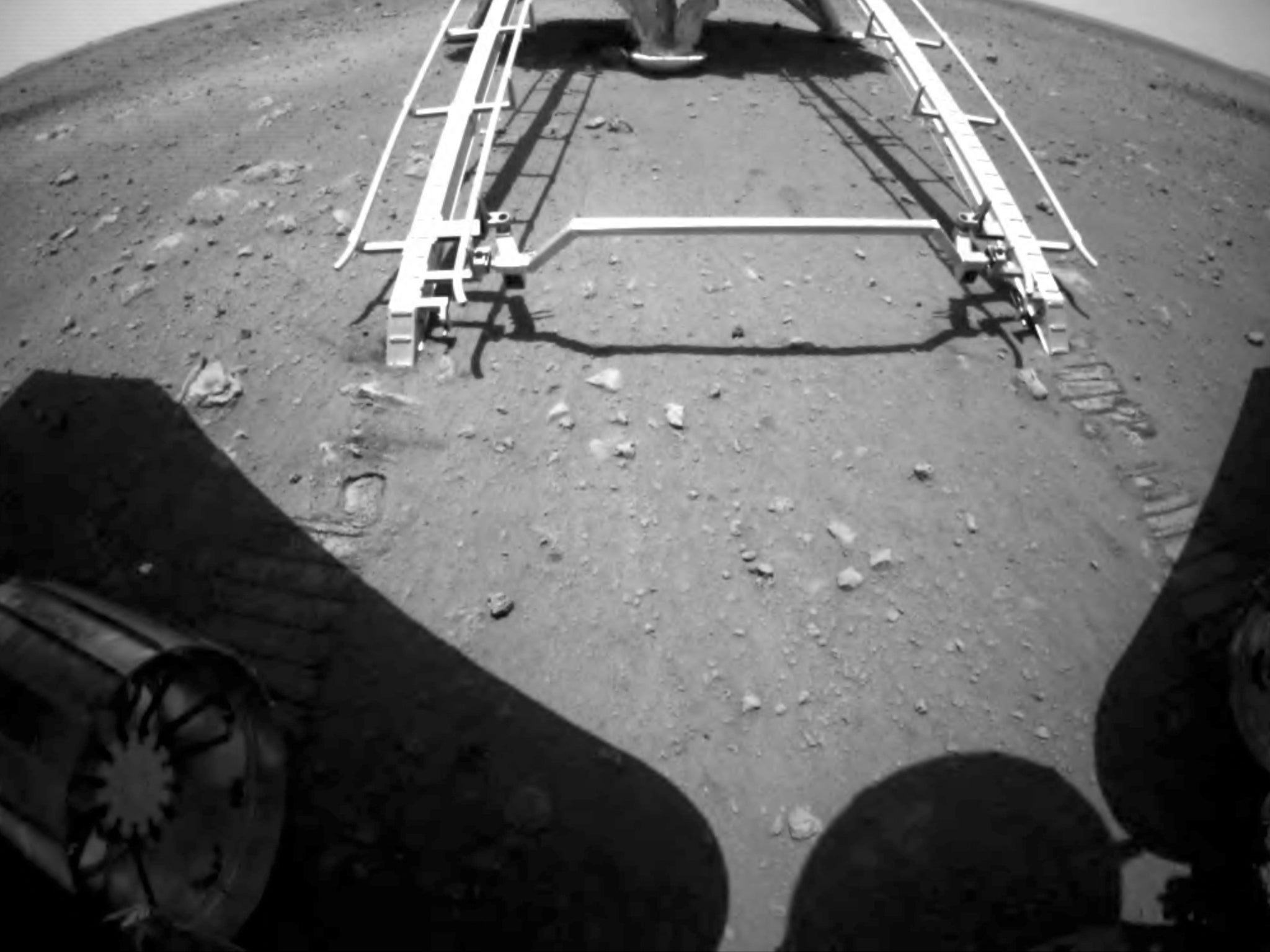China’s Mars rover drives on Red Planet for first time
Zhurong robot is to spend three months searching for evidence of life

Your support helps us to tell the story
From reproductive rights to climate change to Big Tech, The Independent is on the ground when the story is developing. Whether it's investigating the financials of Elon Musk's pro-Trump PAC or producing our latest documentary, 'The A Word', which shines a light on the American women fighting for reproductive rights, we know how important it is to parse out the facts from the messaging.
At such a critical moment in US history, we need reporters on the ground. Your donation allows us to keep sending journalists to speak to both sides of the story.
The Independent is trusted by Americans across the entire political spectrum. And unlike many other quality news outlets, we choose not to lock Americans out of our reporting and analysis with paywalls. We believe quality journalism should be available to everyone, paid for by those who can afford it.
Your support makes all the difference.China’s Mars rover has driven on the surface of the Red Planet for the first time, the country’s space agency has said.
Pictures showing the rover’s descent from its landing platform were released by the China National Space Administration (CNSA) on Saturday.
The solar-powered rover reached the surface at 10.40am Beijing time (2.40am GMT) and began roaming as part of the Tianwen-1 space mission to study the planet, the CNSA said.
China landed the spacecraft carrying the Mars rover last Saturday in a first for the country. Only the US had successfully landed on Mars before.
The rover, named Zhurong after a god of fire from Chinese mythology, joins Nasa's Curiosity and the recently landed Perseverance in exploring the surface of the Red Planet.
Zhurong was running diagnostics tests for several days before Saturday's deployment and is now set to spend three months searching for evidence of life. The CNSA released the first pictures taken by Zhurong on Mars earlier in the week.

The spacecraft in China’s Tianwen-1 mission was launched in July last year and arrived at Mars in February, before touching down last week on a vast plain known as Utopia Planitia, some 1,200 miles from the site of Nasa’s recent deployment.
The Perseverance rover landed in the Jezero Crater, believed to the dried-up bed of an ancient lake, and has been searching for signs of life in rocks on the surface. Nasa’s Ingenuity helicopter was sent with the rover to make the first aircraft to make a controlled and powered flight on another planet.
The US and China are the only two nations to have successfully landed probes on Mars, though a joint mission between the European Space Agency and Russia with that aim is planned for 2022. The Soviet Union attempted to land one on Mars in 1971, five years before the first US success, but it crashed.
China has ambitious plans for space exploration, including landing a person on the moon and the launch of a new crewed space station, the first part of which was launched last month.
Additional reporting by Associated Press
Join our commenting forum
Join thought-provoking conversations, follow other Independent readers and see their replies
Comments